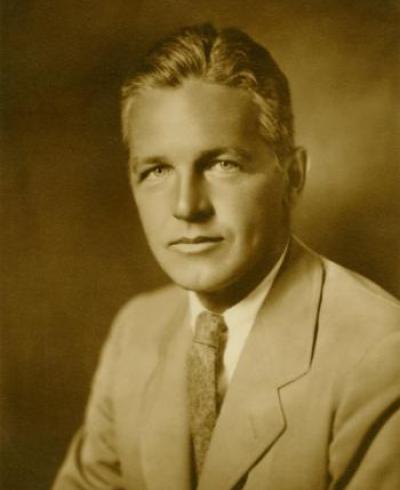In 1875, a group of Durham's successful businessmen formed the Quail Roost Hunting Lodge, acquiring 834 acres in northern Durham County for the purpose. The membership included George W. Watts and John Sprunt Hill, Washington, Ben, and Brodie Duke, Clinton Toms and J.O. Cobb. The club secured the right to hunt quail, dove and turkey over 3000 thousand acres contiguous with the lodge grounds, extending into Person County. In 1902, they formed the Quail Roost Shooting Club, with William T O'Brien (Bonsack Machine mechanic who was instrumental in the formation of the Immaculate Conception Church as president.
The clubhouse is thought to have been constructed between 1890 and 1900 - a single story frame structure in the Queen Anne style. Multiple additional support building were constructed as well, including a log cabin behind the main house which housed workers. A well and its large rectangular surrounding pergola were built nearby.
After the dissolution of the American Tobacco Company in 1911, the economics of a large quail hunting preserve were no longer tenable. Farming was expanding in northern Durham County, and the population of quail decreased. Quail evidently cost ~$1200 apiece by the 1920s. John Sprunt Hill, after buying out the other members of the club, bequeathed the property to his son, George Watts Hill in 1926.
Watts Hill and his wife Ann had moved into his grandfather's house Harwood Hall in 1926 as well. The very early 20th century, as detailed in previous posts on Roxboro Road, began a trend of the return-to-bucolia 'gentleman farmer' - the industrialist who, after acquiring great wealth in the city, sought an escape from the city with a country manse and, frequently, accompanying farm. (See the Biltmore Estate outside of Asheville for an extreme example. Much of the copious wealth garnered in the 1890s and 1900s was tempered by the 1910s and 1920s.
The rise of automobile travel - and its increasing accessibility to the middle class - changed this dynamic as well. The rise of 'suburban estates' - most notably Forest Hills and Hope Valley in Durham meant a promise of the country manse for - well, if not the masses, at least well-to-do professionals.
George Watts Hill was somewhat different, though, in that he took a serious interest in farming, particularly the acquisition of prize dairy cattle. His wife, who had never liked Harwood Hall, took to raising and training horses. Hunters, and jumpers and steeplechasers were bred trained, shown and raced at Quail Roost Stables. The Hills acquired additional land - several thousand acres. (Some of this would eventually become part of NC State's Hill Forest.)
By 1938, the Hills had moved to Quail Roost full-time, after completion of their Colonial Revival home on the hill overlooking the former lodge. By the 1940s the farm was acknowledged to be one of the premier Guernsey herds in the world. At its peak, the farm was comprised of 1800 acres and had 300 "Golden Guernsey" cattle. The primary sire of the herd, High Point Prince Maxim (who would later be memorialized with a stone marker) had a birthday party which was covered by Life Magazine. During these decades, the Quail Roost Maxim auction was one of the top ten cattle auctions in the country. "Quail Roost Nobel Primrose - Grand Champion of the 1948 Dairy Show" had fetched $17,000 at sale in 1945.
Watts Hill began bottling milk from his cows, initially using YE Smith's Long Meadow Dairy and when it "burned up", Watts Hill stated that purchased the then Pet Milk Company on James St (see that post for my confusion on ownership of that concern during this period.) Hill's Guernsey cattle were prized because of the high fat content of their milk - 4.5 to 4.9% butterfat. George's father, JS Hill, kept some of the Guernsey cattle on a farm at the location of the current Crosdaile Country Club.
In 1952, the horse training operation was ended. In 1963, Hill donated his Colonial Revivial home to the University of North Carolina for use as a conference center - and donated much of his unutilized land - at that point approximately 2000 acres along the Flat River - to NC State for use as a teaching forest.
Quail Roost, 1960s
By 1965 the market for Guernsey cattle breeding stock had declined due to the demand for a higher producing, lower fat content milk, and the dairy operation was discontinued.
John Sprunt Hill II (the son of Ann and George) and his wife Irmgard moved to the former stable manager's cottage and began the conversion of the farm to the horse operation it is today. In 1975 they acquired the entire farm, and reestablished a horse training and boarding operation known as Quail Roost Stables.
In 1993, after George Watts Hill's death, the University of North Carolina sold his former home, which had been used as a conference center. It is now privately owned.
The Hill family continues to reside at the property and operate the stables.
Quail Roost barns, 10.26.08
(Photo by G. Kueber)
Quail Roost barns looking northeast, 10.26.08
(Photo by G. Kueber)
The former Hill House and UNC Coference Center at Quail Roost, 10.26.08
(Photo by G. Kueber)







Comments
Submitted by Michael Bacon (not verified) on Fri, 3/6/2009 - 4:00pm
Gary, I think there's something wrong with the Google Maps link. I clicked on it and it looked like it took me to W. G. Pearson Elementary School. I don't think Quail Roost is at the corner of Lawson and Roxboro, but I could be mistaken... :)
Also, your link to Long Meadow Dairy links your post on a warehouse complex.
Submitted by wren (not verified) on Sat, 3/7/2009 - 6:20pm
Long Meadow Dairy -- now there's a blast from the past. I remember very well the milkman delivering to us.
Submitted by JPL (not verified) on Sun, 3/8/2009 - 9:32pm
Any record of what happened to the lodge?
Submitted by Fred (not verified) on Wed, 12/9/2009 - 6:52am
Is this still a lodge that people can rent out for events?
Submitted by Brenda Dunne (not verified) on Sat, 8/29/2015 - 2:06am
I am seeking permission to use the picture of the Quail Roost Farm in a book I am writing. Please let me know if this is acceptable and how the picture should be credited.
Thank you,
Brenda Dunne
Add new comment
Log in or register to post comments.